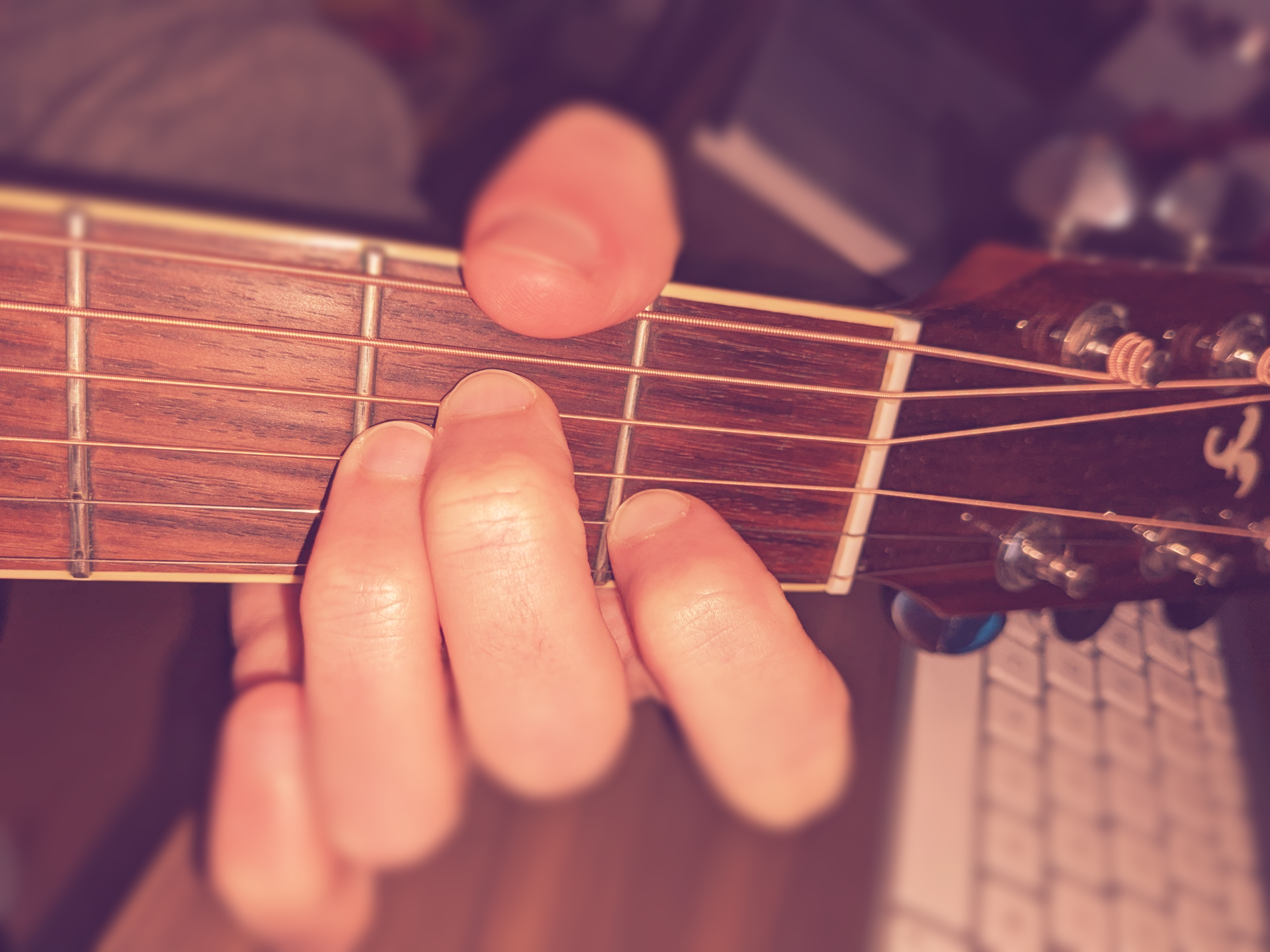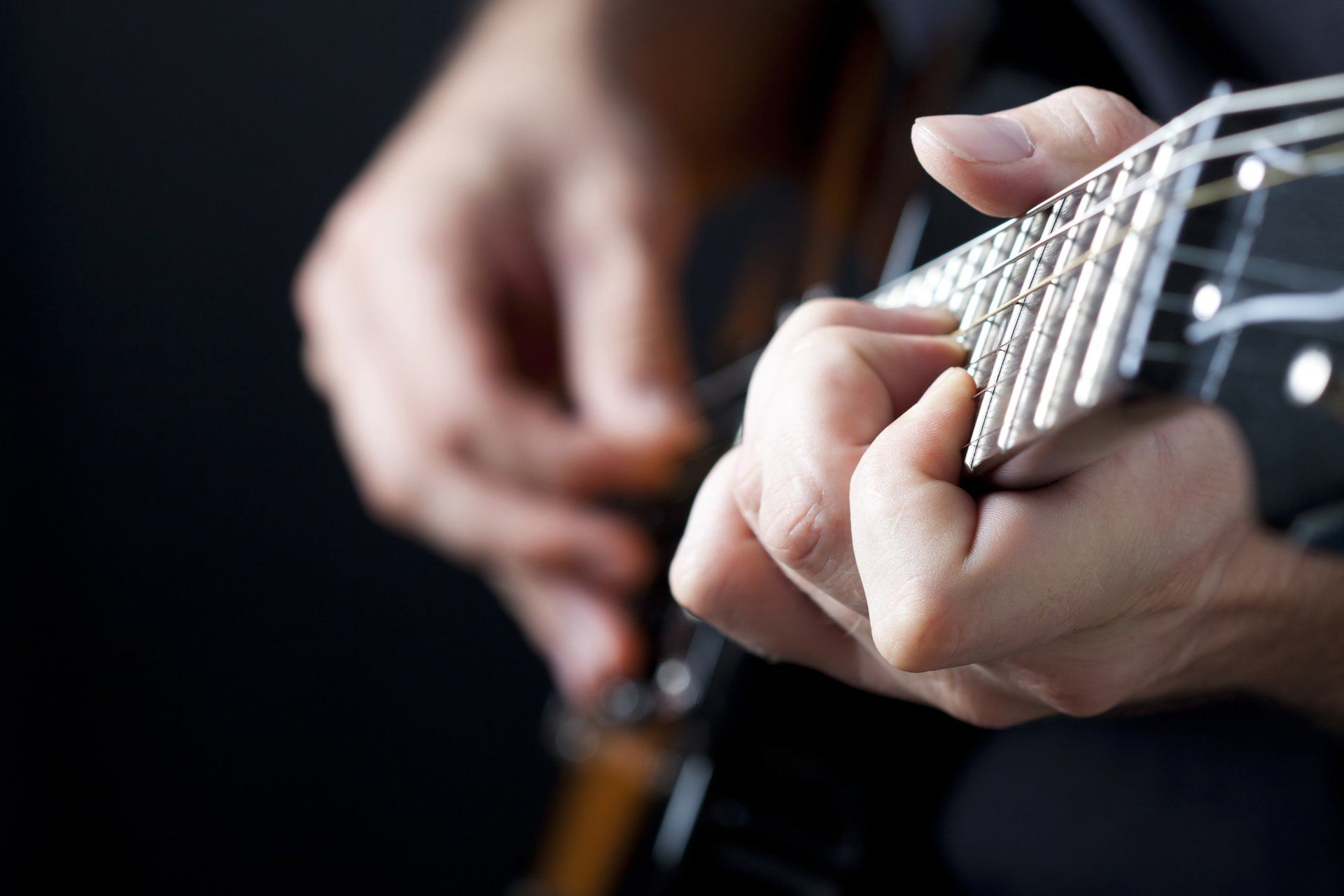Steely Dan – Kid Charlemagne solo analysis.
This post comes with a dense music theory warning.
… a backing track to try it yourself (8 hits and in)…
… the transcription…


… and my annotation … NB – For the most part, we’re in A minor here.
Bar 1 The solo opens with a lick based around bending up to E, this is the 9th of Dm7 – the chord underneath – outlining a minor 9th chord, something which becomes a theme over minor chords as the solo builds.
Bars 2-4 Bars 2-3 are comprised of a II-V-I in Am. The tension builds in the harmony with the dissonant II and V chords, over which Carlton holds a common chord tone – D being the b3 of Bm7b5 and the b7th of E7 – before resolving to Am, where Carlton plays a run up the 2nd shape of the A minor pentatonic scale, landing on a C on beat 2 of bar 4 – the 5th of the Fmaj7 chord underneath.
Bar 5-6 This bar sets up a brief modulation to Em via its V chord – B7. Carlton outlines the change, ascending the D minor pentatonic scale over the Dm7, before sliding into D# – the 3rd of B7 – and bouncing back and forth between D# and F# at the top of what would be the C-shaped B7 arpeggio ( shown below).

That transition lick leads straight into a bend from F# to G – the 9th and 3rd of Em7 – before lingering on the minor 9th as he did in bar 1. The rest of this lick is based in the E Aeolian shape (shown below).

Bars 7-8 Here we have a cool little lick in the D Mixolydian shape in bar 7 before a C major 9 arpeggio in bar 8.

Bar 9 This one’s really fun – the first eight notes ascend an Em7 arpeggio before then descending a D major arpeggio in the same position as bar 7.
Bars 10-11 Here Carlton lingers around the minor 9 again – flipping to and from the B on the 7th fret of the e-string over the A minor, before sliding up into a G major arpeggio, into which he adds the 13th (E on the 9th fret of the g-string) for a bit of colour.
Bar 12-13 These are probably the two most technical licks in the passage. The first, over Fmaj7, ascends the A minor pentatonic from G to E whilst alternately bouncing off a pedal note of E. This is tricky to pick. My recommendation, should you need it, is to alternate pick it, with the recurring 9th fret of the G string on the up strokes and the ascending line on the down strokes.
Bar 13 contains plenty of action. The harmony features a Bb7 which comes from a tritone substitution of Am’s natural V chord – E7 – so it’s the perfect place for adding some tension. The first three notes of the bar are the root, 9th and 7th of Bb7, but following these is a descending C major arpeggio, superimposed over Bb7. This gives us the 9th, 13th and #11, from the Bb lydian dominant scale. This peachy lick is rounded off with a short chromatic run down from the 9th to the root via the b9, jazztastic!

Incorporating melodic minor sounds can be pretty confusing; a shortcut I’ve learned from this lick, is to play a major triad a tone up from a dominant chord to get the Lydian Dominant sound.
Bar 14 is two straight forward major arpeggios over F and G, with a slide from a leading note at the start of each. Both these arpeggios come from the same C-shaped major arpeggio.
Bar 15-16 Here Carlton continues his theme of hitting the 9th over every minor chord, bending up from the 10th fret to a B over Am. In bar 16, a four-note phrase is played twice, the final and longest note in the phrase is E which functions firstly has a minor 9th over Dm7, and then as a major 7th over Fmaj7.
Bar 17 The final flurry starts at the end of bar 16, and is a run up the E blues scale into an F major 9 arpeggio with a chromatic passing note between the 9th and 3rd – frets 8, 9 and 10 on the B-string. This run ends on a Bb – the 7th of the C7#9 vamp the passage ends on.
Conclusions
- Hitting a 9th will jazz up any minor chord, extra points for bending up to it.
- A simple way to get the Lydian dominant sound is to play a major triad a tone up from the dom7 chord you’re playing over. A nice trick is to play the triad of the chord you’re playing over, then shift it up a tone, and then back down again – a trick I call ‘the old in-out-in’.
– Add 9th and 13ths to major arpeggios over dominant chords – as in bars 7 and 11.
– Larry Carlton is awesome. Apparently this was only his second take at this solo. I'd love to hear the other one!



